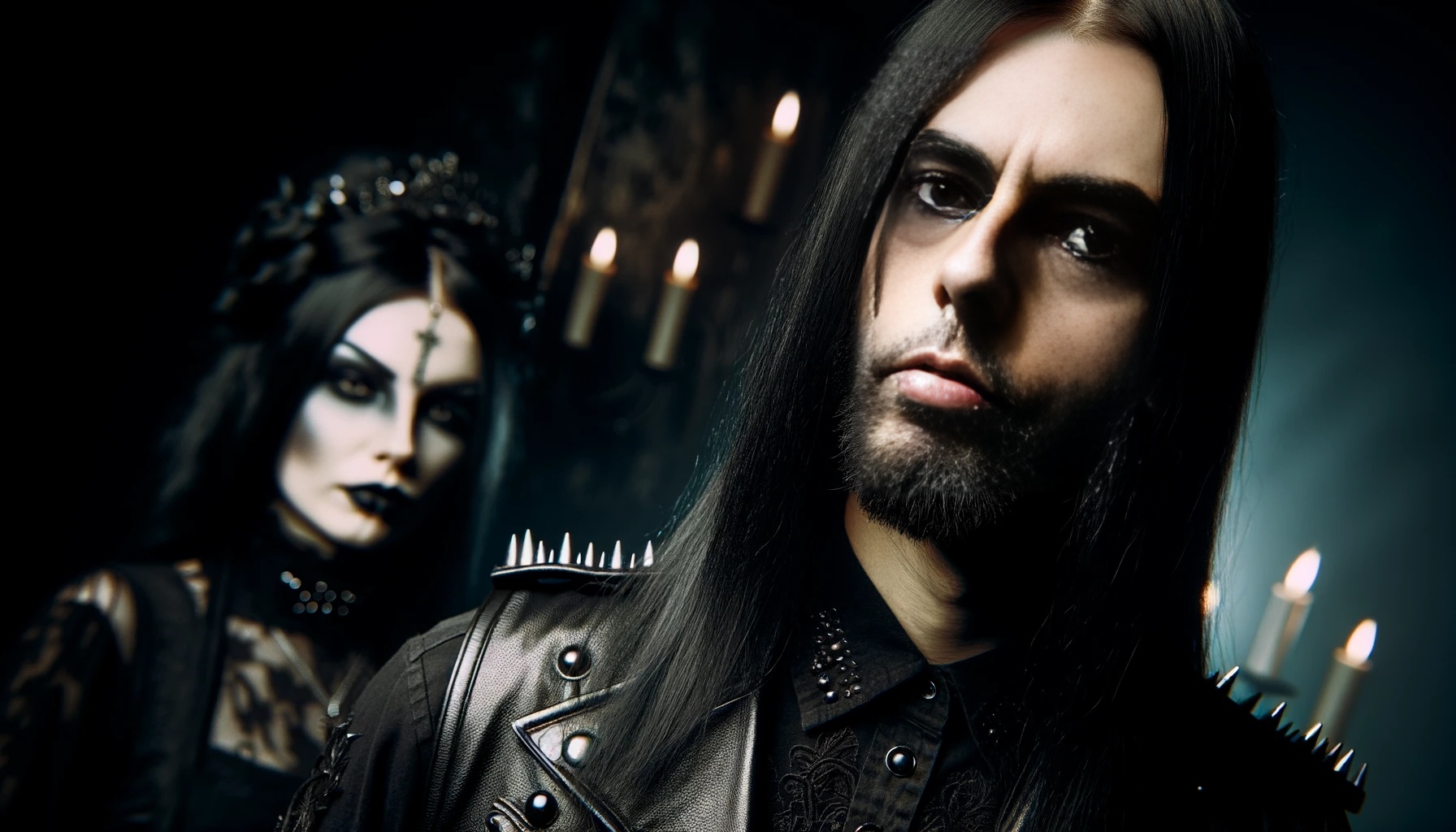In the dark, smoky corners of alternative music scenes—whether goth, industrial, dark wave, or metal—two powerful forces pulse through every beat, every riff, every whispered lyric: sexuality and spirituality. These twin energies, seemingly at odds with one another in a world that tries to keep them apart, often converge within the music we love, weaving a complex and provocative tapestry that challenges our understanding of both. While mainstream music may flirt with superficial representations of sensuality and faith, the alternative scene goes deeper, exploring the raw, primal ways these forces interact. It’s time to peel back the layers of taboo and discuss the undeniable, unapologetic connection between sexuality and spirituality in alternative music.

Why Alternative Music?
Alternative music—especially subgenres that revel in dark, intense aesthetics—has always been a place where people confront what society refuses to discuss. Goth, industrial, dark wave, and metal create a fertile space for exploring subjects that might feel too intense or even sacrilegious elsewhere. These genres don’t fear the uncomfortable; instead, they thrive on it, diving into areas like mortality, existential dread, rebellion, and yes, the provocative collision of sexuality and spirituality. This is the music of outcasts, those who search for a deeper meaning and refuse to accept simple explanations.

For centuries, mainstream culture has dictated that sexuality and spirituality belong in separate realms. Religion, which is so often entwined with spirituality, has long positioned sexuality as something to be controlled, shamed, or hidden. But alternative music throws these restrictions to the wolves. Here, sexuality isn’t something dirty or sinful; it’s powerful, mysterious, and deeply connected to the spiritual journey. Likewise, spirituality isn’t restricted to traditional forms; it’s open, experimental, and highly personal.
So, why does alternative music lean into these themes? Because it’s a genre born from rebellion and honesty. In its most profound moments, alternative music reminds us that sexuality and spirituality are two sides of the same coin—both are expressions of connection, ecstasy, surrender, and transcendence.
Sexuality and Spirituality: The Duality in Alternative Lyrics
When we look at the lyrics of some of the most iconic alternative tracks, we see references to desire, the divine, temptation, and transcendence. Take Depeche Mode’s classic “Personal Jesus.” While it’s ostensibly about seeking comfort in someone who’s elevated to a god-like status, it dances on the edge of intimacy and worship. In this sense, the song blurs the line between a spiritual and sexual connection, revealing how easily one can morph into the other.
Or consider Nine Inch Nails’ “Closer.” This track is infamous for its raw, sensual lyrics, but look deeper, and it’s not just about desire; it’s about searching for meaning and surrendering to something greater. The song captures the dual nature of sexuality as both a physical experience and a gateway to transcendence, a bridge to another realm of existence.
These lyrics challenge the listener to question where the boundaries lie, or if they exist at all. Is the sensual an expression of the divine? Is the divine felt most deeply in moments of human connection and vulnerability? These aren’t just questions; they’re the themes that make alternative music a philosophical journey as much as an artistic one.

The Role of the Body: The Physical as Sacred
In many spiritual traditions, the body is something to be transcended—a vessel for the soul but not inherently valuable in itself. However, alternative music challenges this view, embracing the body as sacred, powerful, and a channel through which we experience both earthly pleasure and spiritual awakening.
In genres like goth and industrial, the body is central. Performers and fans alike use fashion, movement, and music to create an intense, almost ritualistic experience that honors physicality. Fishnets, corsets, leather, and latex—these aren’t just clothes. They’re symbols of autonomy and an embrace of the body as something to be celebrated, adorned, and empowered.
When artists incorporate overtly sensual elements into their performances and imagery, it isn’t just for shock value (though that’s a fun bonus); it’s a statement. They’re reclaiming the body, asserting that physical connection and spiritual exploration don’t have to live in separate worlds. They can, and do, coexist within the alternative scene. This merging of the physical and the spiritual creates a space where listeners are encouraged to explore their own boundaries and confront the societal norms that keep these two realms apart.

Mysticism, the Occult, and Sexual Symbolism
Another area where alternative music blurs sexuality and spirituality is through its embrace of mysticism and the occult. Unlike mainstream culture, which often treats the occult as dark and dangerous, the alternative scene sees it as a path to self-discovery and empowerment. Symbols and themes that traditional religion might shun are embraced here as tools of enlightenment.
Take the iconography of bands like Tool, who integrate sacred geometry, alchemical symbols, and Eastern mysticism into their visuals and lyrics. Their music invites listeners into a world where spirituality isn’t limited by dogma, where the soul is something vast, complex, and deeply connected to the sensual experience. Or consider goth rock bands like Sisters of Mercy, who infuse their lyrics with Biblical references, blending religious imagery with themes of desire, decadence, and surrender. The result is music that feels both sacred and forbidden, like a modern-day hymn for the soul and body alike.
Alternative music refuses to ignore the connection between the sensual and the mystical. Symbols like the pentagram, the snake, and the rose—all of which carry both sexual and spiritual connotations—appear frequently in lyrics, album art, and stage performances. These symbols speak to the idea that sexuality, rather than being opposed to spirituality, is an essential component of it. In this view, true enlightenment comes from embracing the wholeness of the human experience, from the ecstatic to the transcendent.

Dark Wave and the Romanticization of Suffering
In the dark wave genre, where emotion and melancholy reign supreme, sexuality and spirituality often come together through the romanticization of suffering. Artists like Dead Can Dance, Bauhaus, and The Cure create soundscapes that evoke a deep sense of longing and transcendence, where love, desire, and despair intermingle. Here, sensuality isn’t about surface-level pleasure; it’s about diving into the depths of human experience, acknowledging that love and desire can be just as intense, painful, and transformative as any spiritual awakening.
In these songs, the soul’s suffering becomes a form of spiritual growth, and the heartache of desire becomes a channel to higher understanding. Dark wave isn’t interested in sanitized portrayals of love or spiritual bliss. It’s raw, intense, and rooted in the belief that beauty and enlightenment come from embracing all aspects of existence, especially the parts that society encourages us to hide. By blending spirituality and sexuality with suffering, dark wave music explores the full spectrum of the human condition, celebrating vulnerability as a gateway to deeper truths.

Conclusion: Embracing the Duality
The connection between sexuality and spirituality in alternative music is more than just a provocative concept—it’s a call to embrace the fullness of human experience. This music doesn’t shy away from taboo or fear crossing boundaries. It’s a space where listeners and artists can explore their identities, desires, and beliefs without apology.
Alternative music has created a subversive, sacred space for people to question, explore, and redefine the roles of sexuality and spirituality in their lives. Instead of seeing them as forces in opposition, we’re invited to embrace the duality, to acknowledge that both are expressions of something deeper, a search for meaning that transcends the confines of mainstream culture.
If you’re ready to dive deeper into these themes and explore how the realms of sexuality and spirituality intersect in provocative, challenging ways, join me over at Lina’s Dungeon – Carnal Lust & Sexuality where I explore alternative perspectives on life, love, and music. And don’t forget to connect with me on my social media for more musings on the darker, edgier side of life.
So, the next time you find yourself lost in a haunting goth ballad or an industrial beat that pulses through your core, remember: you’re not just listening to music. You’re tapping into the timeless, primal connection between body, soul, desire, and enlightenment. Let the music take you there.





